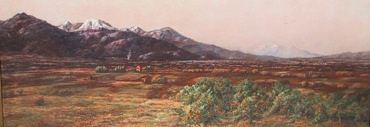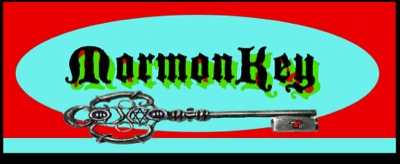

"MORMONKEY: The Key to News and History of the Mormon Faith"
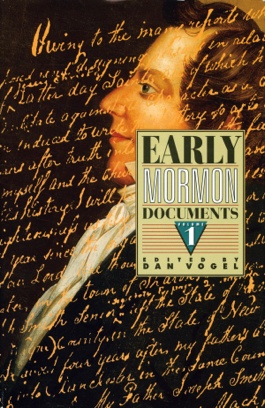
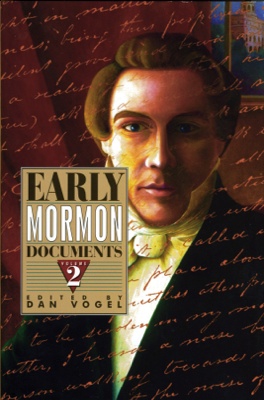
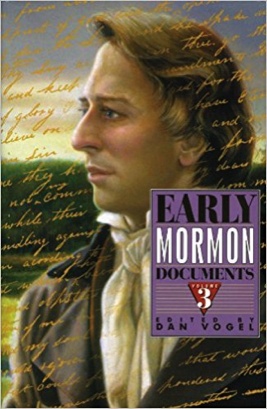
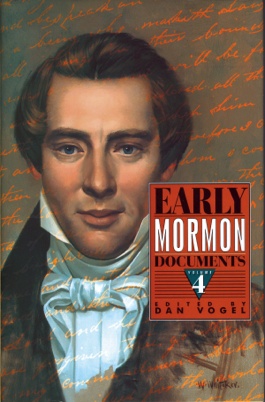
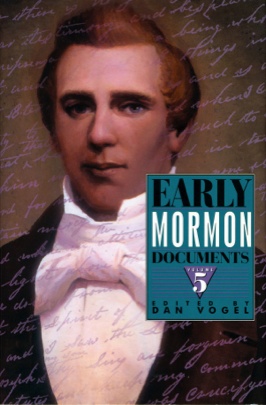
BOOK REVIEWS
Series: EARLY MORMON DOCUMENTS (VOLUME 1)
Hardcover: 724 pages
Publisher: Signature Books; 1 edition (October 15, 1996)
Language: English
ISBN-10: 1560850728
ISBN-13: 978-1560850724
As historians continue to scour through the available scattered remnants of core material and data tracing the beginnings of Mormonism, Dan Vogel’s comprehensive inventory of all relevant primary documents is an unparalleled achievement that is the first of any book on Mormonism to have come forward that cohesively accomlishes this, which was longly in need. This is in despite of the fact that new material has surfaced since author Vogel's publishing effort and which continues to come forward in bits and pieces. And this is in despite of the fact that author Vogel too has overlooked some primary sources during his research for his book series. In this first of a multi-volume disseration, Vogel cites how Joseph Smith’s family: Emma, Katharine, Lucy, Joseph Sr., William, and others have recounted how they became convinced of Prophet's high calling that he expoused as “the spirit of God like a burning fire shut up in [their] bones.” Such narratives are carefully presented in their original forms by Vogel and the author has dutifully supplied full source documentation and annotation. As confidantes, the Smith family were intimately acquainted with their son’s and brother’s extraordinary supernatural encounters.
According to family folk lore, the young seer retired to his bedroom one evening after discussing the Christian New Testament Bible with his parents and siblings. Later that night a 'vision' came forward and Joseph saw an angelic messenger who went on to tell him that his sins were forgiven and that he would uncover an ancient record buried near the Smith family's Manchester, New York State home.
The next day, while at work in the fields accompanied by his older brother, Joseph fainted from lack of sleep and again saw the messenger appear: this time commanding Joseph to go and retrieve the sacred record at the Hill Cumorah, nearby.
Joseph found the book, which was inscribed in an unknown script on thin pages of gold. It was encased in a stone box along with a pair of eye-glasses that had lenses made of diamonds the size of “an English crown only slightly thicker.” When looking through the glasses, and while using an opaque seer stone placed in a hat and while Joseph would run his fingers over the symbols etched into the gold plates, the book’s script appeared as illuminated English words. Joseph published his translation as the Book of Mormon. Later, in a friend’s bedroom, Joseph was directed to ordain elders and to establish a new church. Almost immediately his followers are said to have performed miracles that began with a dramatic levitation and exorcism which inaugurated the restoration of primitive Christianity through a seemingly occult ritual. Dan Vogel discusses the various documents he has uncovered that tell this part of the story and much more; all as the Mormon church grew out of this humble beginning. This first volume pleasantly sets the stage for the subsequent works in the Early Mormon Documents series that is to follow.
Series: EARLY MORMON DOCUMENTS (VOLUME 2)
Hardcover: 704 pages
Publisher: Signature Books; 1 edition (February 15, 1999)
Language: English
ISBN-10: 1560850930
ISBN-13: 978-1560850939
Besides Joseph Smith, who else can be said to have seen the gold plates of Nephi from which the Book of Mormon was translated? One of the "Three Witnesses," said that he saw the holy record with his “spiritual eyes.” Martin Harris said that the plates were kept concealed in a wooden box, wrapped in a cloth, and that nobody saw them - only in the spiritual sense. Supposedly the "Eight Witnesses," according to Harris, at first efrained from signing a written testimonial for the same reason; claiming that they had not seen the plates with their natural eyes. Of course, all of this flys in the face of "Eight Witnesses" John Whitmer's statement that he had saw and actually "hefted" the gold plates.
EARLY MORMON DOCUMENTS: VOLUME TWO provides all of the available statements given by Harris and Oliver Cowdery. The other witnesses statements are featured in subsequent volumes, but lacks the most important true 6 May 1877 testimony provided by John Witmer, which was never published and not known but by happenstance mention of same in a letter from Joseph R. Lambert to E. L. Kelley dated 29 January 1884. Readers can judge for themselves the meaning of these testimonies by Harris and Cowdery in this volume number 2.
In addition, editor Vogel does provide ample evidence that Harris and Cowdery recall Joseph Smith’s treasure hunting, his spiritual gifts, and the process of translating the gold plates. Together their accounts constitute a thoroughly documented, first-person narrative of sublime origins of the Mormon religion.
One section of Volume Two contains reminiscences by non-Mormon typesetter John Gilbert. His contribution to the story behind the Book of Mormon previously had not been properly acknowledged. When the printer’s manuscript was delivered to Gilbert’s office in downtown Palmyra, New York, it was unpunctuated. It merely consisted of a stream of words without breaks in sentences, without commas, paragraph indentations, or even capitalization. Cowdery primarily was the agent working with the E. B. Grandin printing establishment on Joseph Smith's behalf while the book was being readied for publication. Thus it was Cowdery who relied on Gilbert’s copy-editing skills to 'beef-up' the manuscript copy for publication during the long drawn-out typesetting process. Smith was at the time living far away at his inlaws’in Pennsylvania, at the Hale homestead in Harmony by the Susqeuhanna River. John Gilbert’s punctual corrections have appeared in all published editions of the Book of Mormon ever since the issuance of the first Book of Mormon in 1830.
One thing that editor Dan Vogel has done with this volume was to include interviews with the Smiths’ Palmyra neighbors. The idiom that “a prophet is not without honor except in his home town” was true in Joseph Smith’s case. When Smith claimed that God had called him to do a “marvelous work,” people were taken aback. Most thought Smith simply lacked the credentials usually associated with religious leadership. According to his neighbors, Smith was known as “a clever, jovial boy” who had a penchant for adventure and mischief. Some even went on to claim Smith was one who often enjoyed a whiskey-and-water with friends and occasionally got into scuffles; such behavior took on sinister overtones when juxtaposed against the light of Joseph’s sudden blossoming religious inclinations and pursuits. Smith's enthusiastic claims both antagonized the pious members of the local society and also even his former treasure-hunting companions. This was all while the local press lampooned Smith's vision of the “spirit of the money diggers,” All sought to jokingly describe Smith's apparition as “a little old man .... clad [in an] Indian blanket and moccasins” who spoke “reformed Egyptian.”
Although similar bias is evident in some neighbors’ accounts collected and provided in this second work by Vogel, their memories become significant in the instances where they corroborate statements made by Smith family members and early Mormon converts; adding a stronger foundation understanding the initiating and evolving Mormon saga back in its day. Additionally, some of Smith’s early acquaintances such as John Stafford, the brothers Benjamin, Lorenzo, and Orlando Saunders - are considered to be “friendly sources" according to writer Vogel. Other interesting accounts provide information about the general cultural environment of the day. For instance, Willard Chase, whose sister was a village scryer, criticized Smith for having borrowed a seer stone without returning it. While Chase and others denied belief in mysticism and the occult, they nonetheless confirmed its prevalence in western New York back in the 1820's and 1830's - a notion that today is hard to grasp; as although such practice is still very much present in today's society, it is more underground in practice and not part of public mainstream thought - for it is purposely kept hidden.
Series: EARLY MORMON DOCUMENTS (VOLUME 3)
Hardcover: 650 pages
Publisher: Signature Books; 1 edition (April 15, 2000)
Language: English
ISBN-10: 1560851333
ISBN-13: 978-1560851332
In this third volume of the series editor Vogel has assembled fascinatjng accounts that include:
Discussion of the very first Mormon church services as they came to be held on the third floor of the Young Mens Association hall in Palmyra, in a neighbors barn, and even at the Smith family residence early-on.
Discussion of the first baptisms conducted near the Smith residence, at a mill pond in Hathaway Brook.
Apparent accounts of the translation of the Book of Mormon, said by some to have occurred, in part, in a cave dug into Miners Hill, north of the Hill Cumorah - as a initial means of concealing work on translating the gold plates from troubling public scrutiny, as e.
Discussion of the claimed return of the gold plates to a cave.
A detailed account of the Smith family's Palmyra residency that included upstairs from their cake and beer shop on Main Street, as well as at a cabin on Stafford Road, to a cabin in neighboring Manchester, and finally, as well, their small frame house in Manchester.
In this collection of primary sources, editor Dan Vogel offers readers the pleasures and frustrations that greet professional historians seemingly on an ongoing basis when reviewing and discussing Mormon history at large. Raw and uncensored, all the documents upon which a history of Mormon origins could be based said to be here, with strengths and weaknesses inherent evident in any eyewitness account. Understandably these accounts are colorful and detailed, opinionated - as well as inconsistent. In tone these assembled accounts Vogel tirelessly provides range from ultra-devotional to totally antagonistic. Yet each also contributes an important piece to the overall puzzle that continues with the study of Mormonism.
It seems to ring true that the value one places on a source is determined by the questions one hopes to have answered by it. If one wishes to know how the public of the day initially reacted to the Book of Mormon, then the account given from Rochester Gem’s light, gossipy report is welcome, though the report was considered by many not to be a fair representation of the Book of Mormon.
People usually interpret “facts” according to prior expectations that are all based on prior occurances and learning in their lives. Thus readers, when reading this volume and the other works in the series by Vogel, all find themselves making judgments along with editor Vogel about which details are most valid and are keenly aided by Vogel’s comprehensive annotation.
It is his Vogel's that readers will consult the sources and make comparative analysis of same rather than separately. It is through this process and out of this collective pool of information that a reliable reconstruction of events be made - which over-all Vogel splendidly provides the basis to.
The Smiths’ daily work— regimen is discussed as well, including that of Joseph Sr. as a shop owner, as a pork packer and as barrel maker - and also - Joseph Jr. as a hired farm hand, living away from the family at age fourteen.
Series: EARLY MORMON DOCUMENTS (Volume 4)
Hardcover: 482 pages
Publisher: Signature Books; 1 edition (September 15, 2002)
Language: English
ISBN-10: 1560851597
ISBN-13: 978-1560851592
Currently when one thinks of Joseph Smith as a young man, one tends to picture him in a Palmyra, New York, setting. However, Smith actually spent three years in Harmony, Pennsylvania - which is where he stayed to maintain his privacy and security of the gold plates while he and his accompanying scribes carefully transcribed the gold plates. When Smith first arrived there, he boarded with Isaac Hale and did work for Josiah Stowell.
Once Smith married Hale’s daughter Emma, Smith became a permanent resident and property owner at Harmony. During this time Smith also spent about six months in nearby South Bainbridge, New York, where Stowell lived. Smith also spent some time in neighboring Colesville, where he was under the employ of Joseph Knight. During this period, Smith did make a few brief visits back to Palmyra and Fayette to assist Oliver Cowdery at monitoring the typesetting and printing of the Book of Mormon and to set-up the Church of Christ to be coordinated with the release of the Book of Mormon. In September 1830 Smith and his wife Emma left Hamony for good ti take on the Church affairs first in Fayette, then, on to Ohio.
Documentary evidence on record relating to the Smiths’ experiences in Harmony, Colesville, and South Bainbridge has largely remained intact and fairly extensive. Editor Voged has made a
excellent effort at collecting information on tax assessments. From this we have learned that the young couple owned thirteen acres of land, a cow worth ten dollars, and a house worth ten dollars.
The small house where the Smith's had lived consisted of an outbuilding provided by Emma’s father Isaac. Emma Smith's brother Jesse had lived at this house when it was not being used to dress deer skins. Joseph and Emma did their best tried to make it habitable for them and the gold plates transcription work. Some of Joseph and Emma's harmony neighbors commented on the “beautiful hardwood” floors and the “nice fireplace.”
Additionally, editor Dan Vogel carefully assembled court documents relating to Joseph’s money-digging adventures and statements by Joseph’s acquaintances. Letters, diary entries, reminiscences, and news articles that shed considerable light on the Smith family’s circumstances and activities, including the dictation of the Book of Mormon and the first sermons and baptisms of the new church - were all brought together by Dan Vogel quite nicely in this 4th volume of EARLY MORMON DOCUMENTS.
One thing however that this volume and in fact the whole breadth of Vogel's book series, is that he made no effort to seek out reproducing some of the documents that are included and annotated in his series. This is a rather big shortcoming, as had Vogel done this, he would have brought his extensive book series in to a more cohesive presentation that would elevate the presentation of the story at large to a much higher realm of understanding for all who seeks to embrace it.
Perspectives contained within these documents are varied.
For instance, when Smith was brought to trial in South Bainbridge, his supporters considered it a nuisance suit. They agreed with attorney John S. Reed who hoped the “Boy Joseph,” with “cheeks blossomed with the beauty of youth, and … eyes sparkled with innocence,” would be “deliver[ed] from them wicked sons of bitc[h]es.” For their part, the local townsfolk tended to agree with Josiah Stowell’s sons who claimed their father was being tricked and cheated and that lawyer Reed was an opportunist and was deemed, as they phrased it, merely as an “old pettyfogger.”
It is also interesting to note is that Joseph’s famous hat, used for stone gazing, was identified in documents Vogel unearthed, was a white stovepipe. Neighbors knew Joseph as “the peeker,” and some spoke with respect for his gift of “second sight” and for the seer stone, which they called the “All-Seeing Eye.
The enthusiasm with which people embraced the new Mormon gospel is also noted. Vogel found documentation where Newell Knight described the first church conference. He stated: “Much good instruction was and the Holy Ghost was poured out upon us in a marvelous manner. Many prophesied, while others had the heaven opened to their view. It was a scene long to be remembered. I felt my heart filled with love, with glory, and with pleasure unspeakable.” Such little bits of insight like this account that Vogel has cleverly stitched together with others all add tremendous value to Vogel's efforts found in his EARLY MORMON DOCUMENTS series.
Series: EARLY MORMON DOCUMENTS (VOLUME 5)
Hardcover: 576 pages
Publisher: Signature Books; 1 edition (October 15, 2003)
Language: English
ISBN-10: 1560851708
ISBN-13: 978-1560851707
In this five volume masterwork which took Vogel between 7-8 years to produce, as an encapsulation for the record, author and editor Dan Vogel produced a landmark work that includes the following:
Volume 1: The Joseph Smith family and Vermont Volume 2 & 3: Palmyra, New York, and environs Volume 4: Colesville & South Bainbridge, New York, & Harmony, Pennsylvania Volume 5: Fayette, New York
In this work Dan Vogel reproduced a wonderful account by David Whitmer that was codified in an 1882 interview that appeared in the Saint’s Herald published at the time by the Reorganized Church of Jesus Christ of Latter-Day Saints.
It was said by David Whitmer:
"I was plowing in the field one morning, and Joseph [Smith] and Oliver [Cowdery] came along with a revelation stating that I was to be one of the witnesses to the Book of Mormon. I got over the fence and we went out into the woods, near by, and sat down on a log and talked awhile ...... when all at once a light came down from above us and encircled us for quite a little distance around; and the angel stood before us ... dressed in white ....... a table was set before us and on it the records........ from which the Book of Mormon was translated....... While we were viewing them the voice of God spoke out of the Heaven and saying that the Book was true and the translation correct."
All Mormon documents from its origins in New York, up to the time the Church moved West to Kirtland, Ohio have been located and codified by Dan Vogel. However, the most important aspect of the entire Mormon epoch, from a modern standpoint of today, was Vogel’s omission of the existence of the John Whitmer 6 May 1877 Book of Mormon Testimony letter to Joseph R. Lambert - the single most important document extant for all of Mormonism.
